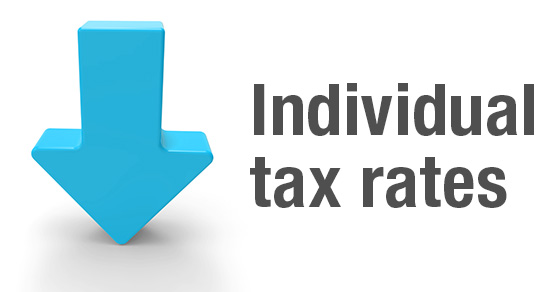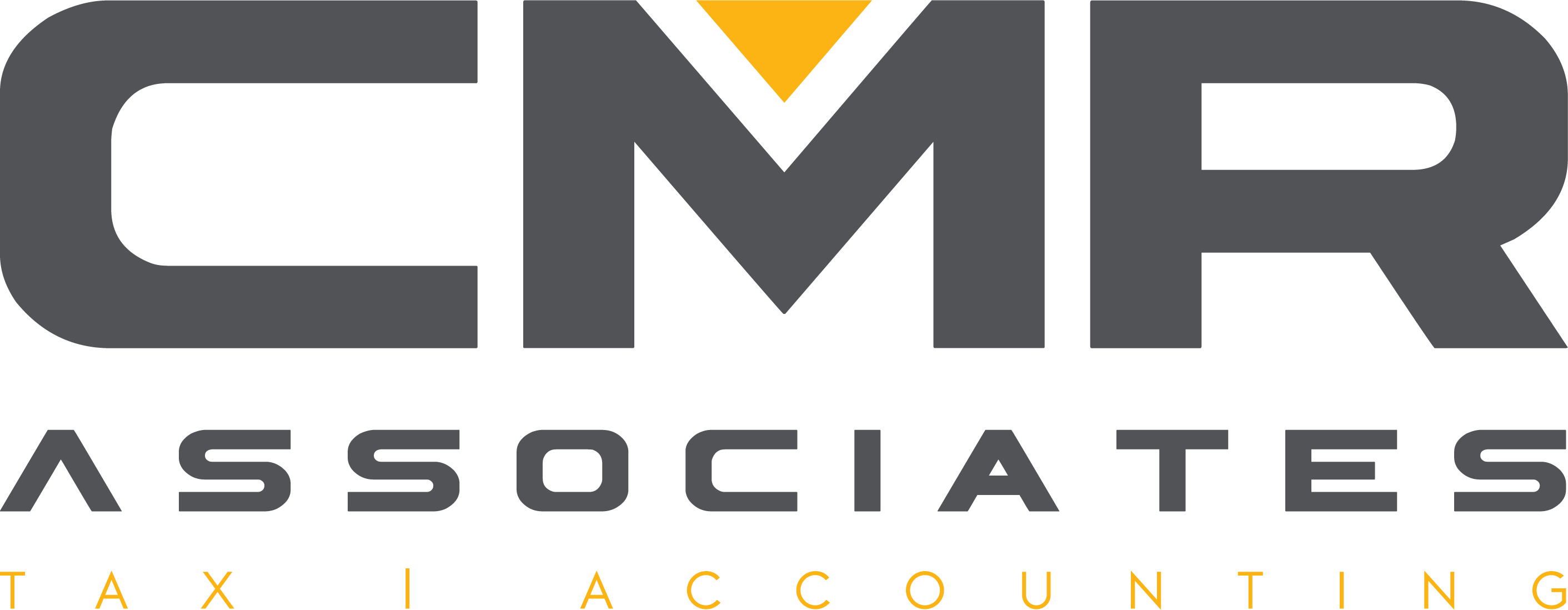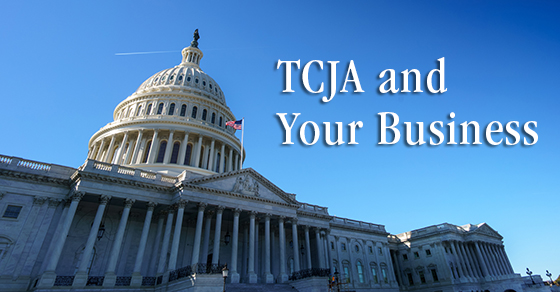 Most individual tax rates go down under the TCJA
Most individual tax rates go down under the TCJA
The Tax Cuts and Jobs Act (TCJA) generally reduces individual tax rates for 2018 through 2025. It maintains seven individual income tax brackets but reduces the rates for all brackets except 10% and 35%, which remain the same.
It also makes some adjustments to the income ranges each bracket covers. For example, the 2017 top rate of 39.6% kicks in at $418,401 of taxable income for single filers and $470,701 for joint filers, but the reduced 2018 top rate of 37% takes effect at $500,001 and $600,001, respectively.
Below is a look at the 2018 brackets under the TCJA. Keep in mind that the elimination of the personal exemption, changes to the standard and many itemized deductions, and other changes under the new law could affect the amount of your income that’s subject to tax. Contact us for help assessing what your tax rate likely will be for 2018.
Single individuals
| Taxable income | Tax |
| Not over $9,525 | 10% of the taxable income |
| Over $9,525 but not over $38,700 | $952.50 plus 12% of the excess over $9,525 |
| Over $38,700 but not over $82,500 | $4,453.50 plus 22% of the excess over $38,700 |
| Over $82,500 but not over $157,500 | $14,089.50 plus 24% of the excess over $82,500 |
| Over $157,500 but not over $200,000 | $32,089.50 plus 32% of the excess over $157,500 |
| Over $200,000 but not over $500,000 | $45,689.50 plus 35% of the excess over $200,000 |
| Over $500,000 | $150,689.50 plus 37% of the excess over $500,000 |
Heads of households
| Taxable income | Tax |
| Not over $13,600 | 10% of the taxable income |
| Over $13,600 but not over $51,800 | $1,360 plus 12% of the excess over $13,600 |
| Over $51,800 but not over $82,500 | $5,944 plus 22% of the excess over $51,800 |
| Over $82,500 but not over $157,500 | $12,698 plus 24% of the excess over $82,500 |
| Over $157,500 but not over $200,000 | $30,698 plus 32% of the excess over $157,500 |
| Over $200,000 but not over $500,000 | $44,298 plus 35% of the excess over $200,000 |
| Over $500,000 | $149,298 plus 37% of the excess over $500,000 |
Married individuals filing joint returns and surviving spouses
| Taxable income | Tax |
| Not over $19,050 | 10% of the taxable income |
| Over $19,050 but not over $77,400 | $1,905 plus 12% of the excess over $19,050 |
| Over $77,400 but not over $165,000 | $8,907 plus 22% of the excess over $77,400 |
| Over $165,000 but not over $315,000 | $28,179 plus 24% of the excess over $165,000 |
| Over $315,000 but not over $400,000 | $64,179 plus 32% of the excess over $315,000 |
| Over $400,000 but not over $600,000 | $91,379 plus 35% of the excess over $400,000 |
| Over $600,000 | $161,379 plus 37% of the excess over $600,000 |
Married individuals filing separate returns
| Taxable income | Tax |
| Not over $9,525 | 10% of the taxable income |
| Over $9,525 but not over $38,700 | $952.50 plus 12% of the excess over $9,525 |
| Over $38,700 but not over $82,500 | $4,453.50 plus 22% of the excess over $38,700 |
| Over $82,500 but not over $157,500 | $14,089.50 plus 24% of the excess over $82,500 |
| Over $157,500 but not over $200,000 | $32,089.50 plus 32% of the excess over $157,500 |
| Over $200,000 but not over $300,000 | $45,689.50 plus 35% of the excess over $200,000 |
| Over $300,000 | $80,689.50 plus 37% of the excess over $300,000 |
© 2018

 The TCJA temporarily expands bonus depreciation
The TCJA temporarily expands bonus depreciation Tax Cuts and Jobs Act: Key provisions affecting individuals
Tax Cuts and Jobs Act: Key provisions affecting individuals Tax Cuts and Jobs Act: Key provisions affecting businesses
Tax Cuts and Jobs Act: Key provisions affecting businesses 401(k) retirement plan contribution limit increases for 2018; most other limits are stagnant
401(k) retirement plan contribution limit increases for 2018; most other limits are stagnant